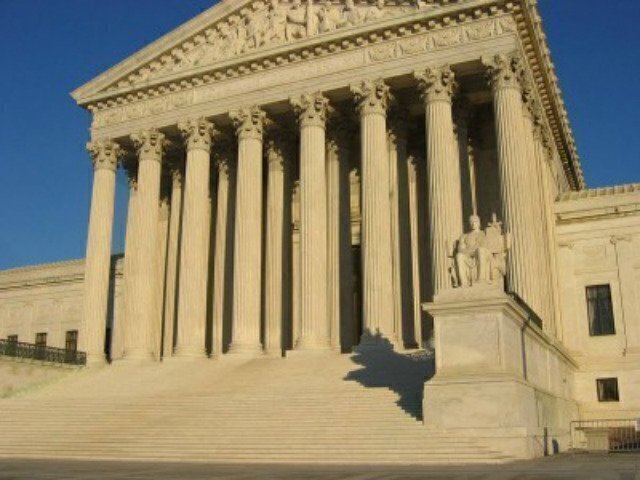The Supreme Court on Wednesday sent a very strong hint that it is eager, maybe even passionately so, to decide one of history’s most important cases on dealings between religion and government. And, almost as unmistakable was a signal that most of the Justices have a keen interest in giving churches more access to public money and benefits.
 These inclinations emerged repeatedly even though the court, if it wished, could simply pass up this historic controversy, because there is a strong argument that it really has no genuine controversy before it. If that is so, the Constitution’s Article III says that the court cannot decide it. Article III, though, was little more than a footnote in the argument in the case of Trinity Lutheran Church v. Comer.
These inclinations emerged repeatedly even though the court, if it wished, could simply pass up this historic controversy, because there is a strong argument that it really has no genuine controversy before it. If that is so, the Constitution’s Article III says that the court cannot decide it. Article III, though, was little more than a footnote in the argument in the case of Trinity Lutheran Church v. Comer.
The case on its own merits is one or the most significant tests in years of how high Thomas Jefferson’s “wall of separation” between church and state will remain. But, beyond that significance, the case has been gaining in public visibility because the court has been putting off, for a year and more, actually starting to explore how to decide it (probably because it had a vacant seat on the bench).
From the moment Wednesday’s hearing began, at 12 minutes past 10 o’clock, it was as if the Justices’ own interest had been stifled all of those months, and now suddenly burst forth. That continued for the full hour, and the pace of question-and-answer made it hard to keep up.
But more than the Justices’ enthusiasm, what was most telling was that any thought that the case might simply go away — stirred up by recent developments in Missouri, where the case originated — seemed wholly fanciful.
The arrival of a newly elected governor, strongly sympathetic to church's desire to have equal access to government money to pay for rubberized surfaces for school playgrounds, made it seem that Trinity Lutheran need only file a new application to take part, and it would gain everything that it sought in its lawsuit against the state.
The Columbia, Mo., church had previously been denied access to such funds, solely because it is a church and the Missouri state constitution flatly forbids the flow of any money from the state treasury to religious organizations. If it now is eligible to apply without that restriction, wasn’t its continuing lawsuit unnecessary — or, in legal terms, moot, and thus beyond the court’s reach? (The court itself had an interest in that very question on the eve of the hearing, asking the lawyers to react to it; both sides said it wasn’t a problem.)
That question came up here and there in the argument, but it appeared to hold no interest for most of the Justices. The constitutionality of the denial of Trinity Lutheran’s prior application was what nearly all of them wanted to talk about, and they explored with two lawyers a wide array of factual and hypothetical scenarios to test why that church should not win the case, hands-down.
The point that arose most often was that, if the only reason Trinity Lutheran was going to be kept from equal access to a state program that pays for a rubberized playground surface (not a religious object), why isn’t that an unconstitutional denial of religious freedom?
A lawyer for the state of Missouri, who had been handed the now-more-challenging task of keeping the case alive even those his client was now willing to let Trinity Lutheran get the money it wants to buy the playground rubber, tried very hard to describe a constitutional dividing line between the kind of state benefit to a church that would be blocked by a wall of separation, and the kind that would not be.
But that effort proved very nearly futile. Even the newest member of the court, Justice Neil M. Gorsuch, ridiculed the suggested line, saying “One could play with that line forever.”
In the end, only two Justices made comments or asked questions that suggested that they were prepared to let the states maintain a tradition of church-state separation, especially when it comes to access to public funds. Those two were Justices Sonia Sotomayor, most energetically, and, Justice Ruth Bader Ginsburg, less so.
The dominant flow of the whole hour had become so clear to Justice Sotomayor that, near the end, she made a conspicuous effort to try to scuttle the case.
She suggested to the state’s lawyer that he was assigned the case to speak for a client who no longer had any objection to what its supposed legal adversary (the church) was seeking, so there was “no adversity in this case.” (Article III, when it is allowed to matter, demands that in a federal court, there has to be two sides engaged in a real, live controversy. )
The controversy, Sotomayor said tartly, had been “manufactured,” and that made it moot.
It was, by then, almost a forlorn thought. Maybe she and Justice Ginsburg might have shared it.
Legendary journalist Lyle Denniston is Constitution Daily’s Supreme Court correspondent. Denniston has written for us as a contributor since June 2011 and has covered the Supreme Court since 1958. His work also appears on lyldenlawnews.com, where this post first appeared.
Sign up to receive Constitution Weekly, our email roundup of constitutional news and debate, at bit.ly/constitutionweekly







